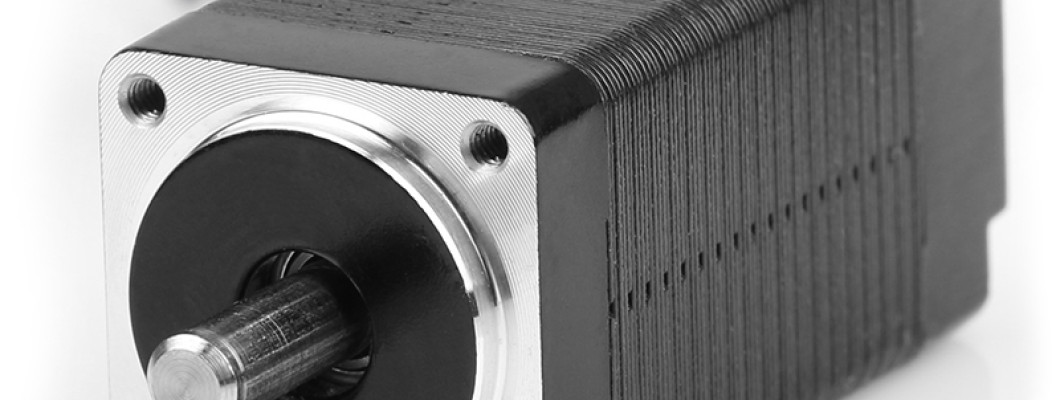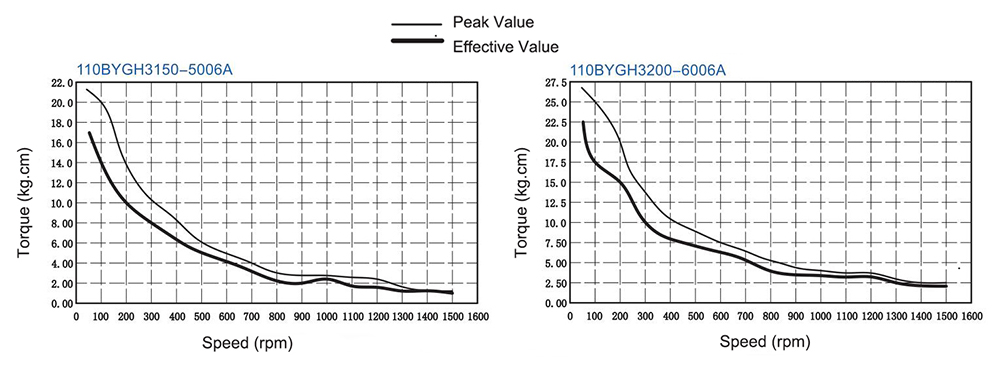
Selection of stepper motor
Stepper motor is composed of three elements: step angle (number of phases), static torque and current. When these three elements are determined, the model of the stepper motor is determined.
1. The selection of step angle
The step angle of stepping motor depends on the requirements of the load accuracy, it refers to how much angle (including deceleration) the stepper motor with travel within each equivalent when users convert the minimum resolution (equivalent) of the load to the motor shaft. The step angle of the motor should be equal to or less than this angle. Nowadays, the step angle of stepper motors on the market is generally 0.36° / 0.72° (five-phase motors), 0.9° /1.8° (two-phase and four-phase motors), 1.5° /3° (three-phase motors) and so on.
2. Selection of static torque
The definition of static torque is when an object has a tendency to rotate towards an axis but does not rotate, the generated torque (moment) is the static torque (moment).
* Static moment calculation method:
Concept definition: The distance between the mass point of mass m and a certain axis of rotation L is l, then the static moment of the particle to the axis of rotation L is: M (L) = m×l. From the above relationship, we can see that a two-dimensional plate is set to a certain axis of rotation. If there is a static torque, the mass element is: dm=ρ(x, y) ds and the static distance element is: dM (L) = l×ρ(l, L) ds.
The static torque of the plane to a certain axis of rotation is: M (L) = ∫∫ [S] l × ρ (l, L) ds, thereinto, S is the area of the two-dimensional plate, ρ (l, L) is the density relative to the position function, l is the moment distance perpendicular to the rotation axis L to the mass point mi.
Similarly, the static torque of a three-dimensional object on a plane can be defined: M (L) = ∫∫∫ [V] l × ρ (l, L, z) dv, the above formula is the static torque of the object on the L-Z plane.
In theory, we know how to calculate the static torque, but in practical applications, the selection of static torque needs to be determined according to the load of the step motor. The load can be classified into two types: inertial load and frictional load. A single inertial load and a single frictional load do not exist. When it gets started directly (generally at low speed), both loads should be considered. When accelerating start begins, the inertia load is mainly considered and only the friction load should be considered when it is running at a constant speed. Normally, the static torque should be between 2-3 times of the friction load. Once the static torque is selected, the frame and length of the stepper motor can be chosen accordingly.
3. Selection of current
Stepping motors with the same static torque have different operating characteristics due to different current parameters. The motor current can be judged according to the torque-frequency curve (the driving power supply and driving voltage for referance).
4. Torque and power conversion
Stepper motors are generally used in a wide range of speed regulation and their power varies. Generally speaking, only torque is used to measure. The conversion of torque and power is as follows: P= Ω·M
Ω=2π·n/60
P=2πnM/60
Meanwhile, the P is the power unit in watts, Ω is the angular velocity per second in radians, n is the rotation speed per minute and M is the torque in Newton · meters.
P=2πfM/400 (half-step work)
And f is the number of pulses per second (referred to as PPS).
The following the torque curve of a three phase stepper motor --- NEMA 42 stepper motor.

Driving Mode: Constant current drive
Driving Voltage: 36V DC
Excitation Mode: 3 phase
Remarks: Peak current is equal to √2 times effective value.
Attentions that need to pay in the application
1. The stepper motor is used in low-speed occasions, namely, the speed should not exceed 1000 rpm, (6666 PPS at 0.9°) and it is best to use it between 1000-3000 PPS (0.9°). At this time, the step motor has high working efficiency and low noise.
2. It is a good idea that not to use the stepper motor with the full-step state. Because the vibration will be large in such a full-step state.
3. Due to some reasons, only the stepping motor marked with a nominal voltage of 12V can adopt 12V and the voltage value of other motors is not the driving voltage value and users can select the driving voltage according to the stepper motor driver (It is recommended that 57BYGH stepper motors adopt 24V-36V DC, 86BYGH stepper motors adopt 50V DC and 110BYGH stepper motors use higher than 80V DC). What's more, it is sure that 12 volt voltage, in addition to 12V constant voltage driver, can also adopt other driving power supply, but the temperature rise needs considering.
4. When the loads comes with large moment of inertia, a large frame size motor can be selected for options.
5. When the motor has the load at a high speed or with a large inertia, it generally does not get start at the working speed, but gradually increasing the frequency and speed is adpted. On the one hand, the stepper motor does not lose steps. On the other hand, the noise can be reduced and the positioning accuracy of the stop can be improved.
6. When high precision is required, it should be solved by mechanical deceleration, increasing the motor speed or adopting a stepper motor driver with a high subdivision number. Additionally, 5-phase motor can also be used, but the price of the entire system is relatively expensive and few manufacturers do like this.
7. The stepper motor should not work in the vibration area. If necessary, it can be solved by changing the voltage, current or adding some damping.
8. When the motor works below 600PPS (0.9°), it should be driven by small current, large inductance and low voltage.
9. The principle of selecting the step motor first and then the stepper motor drive should be followed.

Leave a Comment